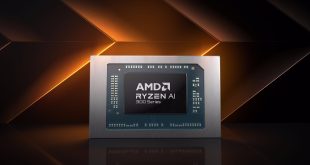Intel Corp. predicts that Moore’s law will last for at least another decade and the number of transistors per chip will keep doubling every two years. While there are challenges ahead, Intel’s engineers are going to solve them.
Later this month Moore’s law will hit 50 years, an unprecedented date for the industry, where every innovation gets outdated in a couple of years. In fact, the very reason why Moore’s Law still lasts is because every breakthrough in development of semiconductors is succeeded by another one 24 months after introduction, enabling chip designers to double the amount of transistors per chip. According to Intel Corp., the evolution of semiconductors will continue at the rapid pace and the law will last for at least 10 more years. Or, maybe, longer.
“We can see about 10 years ahead, so our research group has identified some promising options [for 7nm and 5nm] not yet fully developed, but we think we can continue Moore's Law for at least another 10 years,” said Mark Bohr, director of process architecture and integration at Intel, during a special event, reports V3.
Intel notes that since research and development of manufacturing technologies is a serial process, it is almost impossible to accurately predict which challenges will arise, which will be solved and which could mean the end of Moore’s law. When it comes to fabrication technologies, Intel has horizon of around 10 years.
“If you had asked me 10 or 20 years ago, I would have given you the same answer: our visibility back then was about 10 years into the future,” said Mr. Bohr. “It is fair to say that eventually Moore's law will slow down or come to an end, but we do not see that in the imminent future.”
Mr. Bohr confirmed that Intel is looking at so-called ‘III-V' materials from the third and fifth columns of the periodic table for potential use in the transistor channel instead of hafnium-based dielectrics used today, but did not elaborate. He also did not reveal any thoughts regarding materials like graphene or possible use of new transistor structures, such as gate-all-around FETs. In GAA FETs gate material surrounds the channel region on all sides; GAA FETs can have two or four effective gates. Intel's tri-gate transistors used today have three gates.
Since Moore’s law is generally an economic law, not only a technology transition law, it can transform, evolve or go into a different direction eventually. For example, instead of reducing sizes of transistors, producers of chips could start stacking components on top of each other, thus increasing integration.
Discuss on our Facebook page, HERE.
KitGuru Says: Since Intel is already researching options for 7nm and 5nm fabrication technologies, whereas ASML is studying technologies needed to design equipment that will be used to produce chips using 3nm and 2nm manufacturing processes, there are no doubts that Moore's law will continue to live for another ten or more years. However, a big question is how many companies will have capital to develop new manufacturing technologies and acquire appropriate tools going forward…
 KitGuru KitGuru.net – Tech News | Hardware News | Hardware Reviews | IOS | Mobile | Gaming | Graphics Cards
KitGuru KitGuru.net – Tech News | Hardware News | Hardware Reviews | IOS | Mobile | Gaming | Graphics Cards



oi898 . true that Patricia `s report is impossible… on wednesday I bought Saab 99 Turbo since I been making $8569 thiss month and also ten/k this past month
. it’s actualy my favourite-work I’ve had . I began this three months/ago and pretty much straight away was earning more than $75… p/h . you could try here HERE’S MORE DETAIL
Yes, after buying out and almost destroying your competitor in borderline unethical ways, I’m sure the pressure of innovation has never been this high, Intel. Sure thing.
The only competitor that has a usable x86 license is nearly decapitated. Oh what a wonderful free market we all live in.